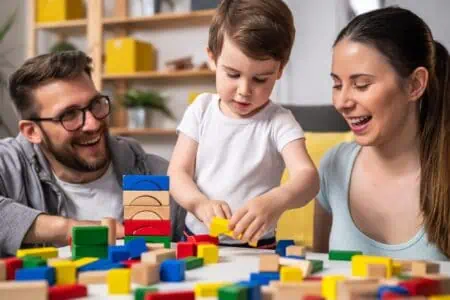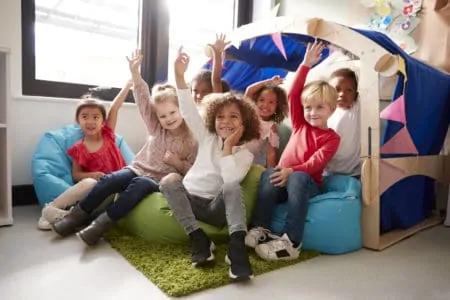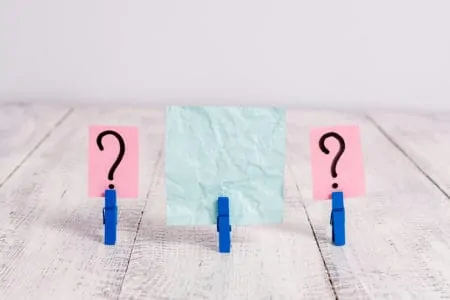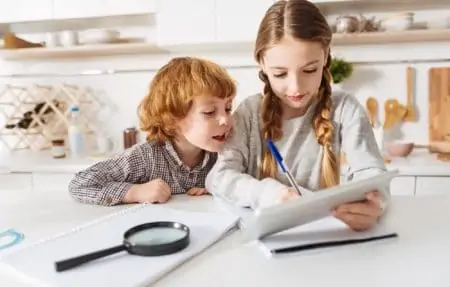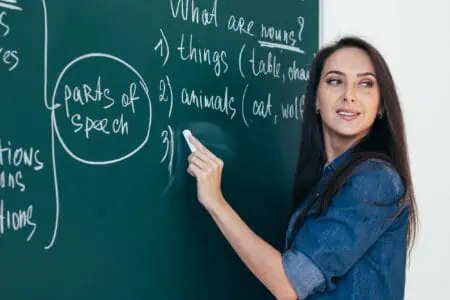Want to boost your child’s brainpower without boring drills? Memory skills are the building blocks of learning, helping kids master math, science, and reading (1). The best part is that you can strengthen these skills through play.
We found 15 fantastic memory games for kids to engage every type of learner. Whether your family loves board games, card decks, or active DIY challenges, we have a recommendation for you.
Below, we break down how to play each game and explain exactly how it sharpens your child’s mind.
Key Takeaways
- Memory games enhance concentration, visual discrimination, and cognitive processing speed.
- Options like The World Game and Simon target specific skills like geography and auditory sequencing.
- You can start training memory skills with toddlers as young as 18 months using simple hide-and-seek concepts.
- DIY games like Kim’s Game are effective, cost-free ways to practice observation at home.
Best Memory Games for Kids
We selected these 10 top-rated games based on fun factor, educational value, and durability. Here is what you need to know about age suitability and gameplay to help you pick the right one for your family.
The Magic Cup Game
The Magic Cup Game is a timeless classic that entertains toddlers and adults alike. You can buy a dedicated set or simply use plastic cups from your kitchen. The concept is simple but effective: hide a ball, shuffle the cups, and challenge your child to track the object. It is a perfect starter game because it requires zero reading skills.
Recommended Age: 3+
How to Play
Here is the step-by-step process:
- Set up three opaque cups upside down on a table.
- Place a small ball or treat underneath one cup while the child watches.
- Slide the cups around to switch their positions.
- Ask the child to point to the cup hiding the ball.
- Level up: Move the cups faster or add a fourth cup to increase the difficulty.
How It Improves Memory
This game trains visual tracking and sustained attention. Your child must lock their focus on a specific object while filtering out distractions. This ability to focus directly translates to the classroom, helping them pay attention to teachers during lessons.
The World Game
Turn geography lessons into a competitive thrill with the World Game. This deck features 194 cards packed with facts about different nations. It is an excellent choice for elementary-aged kids who love trivia. We love that it replaces boring flashcards with an interactive battle of stats.
Recommended Age: 5+
How to Play
Follow these rules to start the battle:
- Deal the cards evenly among all players.
- Everyone looks at their top card and studies the stats (population, area, etc.).
- The first player picks their strongest category and reads the number aloud.
- The player with the highest number in that category wins the round and collects everyone’s top card.
- Challenge mode: A player can call “Challenge” to quiz an opponent on the flag, capital city, or continent. If the guesser is right, they steal the card.
- The player who collects all the cards wins.
How It Improves Memory
Repeated exposure to the cards helps kids memorize flags, capitals, and locations without realizing they are studying. The “Challenge” mechanic adds a high-stakes incentive to recall specific facts, strengthening long-term memory and factual retention.
Simon Electronic Game
Simon Electronic Game is the ultimate test of auditory and visual sequencing. This handheld device flashes lights and plays sounds in a random order that you must copy. It is compact, making it a lifesaver for road trips or solo play when parents need a break. Note that it does require batteries, so keep spares handy.
Recommended Age: 8+ (though tech-savvy 5-year-olds often love it)
How to Play
Beat the computer by following these steps:
- Simon lights up one color and plays a sound.
- Press the corresponding button to repeat it.
- Simon repeats the first signal and adds a new one.
- You repeat the entire sequence from the beginning.
- The game continues adding signals until you make a mistake. Pass it to the next player to beat the high score.
How It Improves Memory
Simon exercises sequential processing and short-term working memory (2). Your child must hold a growing pattern in their mind while reacting quickly. This strengthens the cognitive skills required for following multi-step instructions in school.
AluAbi Animal Letter Matching Game
Toddlers can practice their ABCs with the AluAbi Animal Letter Matching Game. The cards are extra thick and durable, designed specifically for little hands that might be rough on toys. It combines animal recognition with alphabet learning, giving it plenty of replay value as your child grows.
Recommended Age: 4+
How to Play
Get started with these simple rules:
- Shuffle the cards and lay them face down in a grid. Start with fewer pairs for beginners.
- Player one flips two cards. If the animal matches the letter (like ‘C’ and ‘Cat’), they keep the pair.
- If they do not match, flip them back over.
- Players take turns until the board is clear. The person with the most pairs wins.
How It Improves Memory
This game builds spatial memory and association skills. Kids must remember the location of specific cards (spatial) while linking the letter to the animal image (association). This dual processing boosts early reading readiness and problem-solving.
Flip-to-Win Memory Game
The Flip-to-Win Memory Game is a travel favorite because there are no loose pieces to lose under the car seat. It features a wooden board with hinged doors and interchangeable theme cards (fruits, numbers, cars). It is a tidy, self-contained alternative to messy card decks.
Recommended Age: 5+
How to Play
Here is how to use the board:
- Slide a theme card into the top slot and close all the doors.
- The first player flips open two doors. If the pictures match, keep them open and take another turn.
- If they don’t match, close the doors.
- Use the built-in sliders to keep score. The player with the most matches wins.
How It Improves Memory
This game targets visual memory and concentration. Since the grid is smaller than a standard deck of cards, it is less overwhelming for children who struggle with focus. It encourages them to pay close attention to opponent’s turns to gain an advantage.
Little Treasures Matching Letter
Combine spelling practice with memory training using the Little Treasures Matching Letter game. It includes a tray, picture cards, and letter cubes. It is an ideal pick for preschoolers transitioning into kindergarten who are showing interest in reading.
Recommended Age: 3+
How to Play
Try these steps for literacy fun:
- Place a picture card in the slot (e.g., a picture of a “PIE”).
- The child finds the matching letter cubes to spell the word on the tray.
- Memory Challenge: Use the flap to cover the word on the card. Ask the child to spell it from memory using only the picture as a clue.
- Lift the flap to check if they got it right.
How It Improves Memory
This game bridges the gap between visual recognition and recall. Children move from simply copying letters to retrieving the spelling from their mind. This strengthens “sight word” retention, which is crucial for reading fluency.
Tongues Out!
Tongues Out! adds a hilarious, tactile twist to standard matching games. Instead of flipping cards, kids squeeze rubber pugs to reveal colored tongues. It requires no reading, making it fair for siblings of different ages to play together. We love the soft, squishy texture for sensory-seeking kids.
Recommended Age: 4+
How to Play
Get ready to squeeze some pugs:
- Place all the pugs in the center of the table.
- Roll the two colored dice (e.g., Red and Blue).
- Squeeze two pugs to see if their tongues match the dice colors.
- If you find a match, move that pug to your “park” card.
- If not, put the pug back. Remember which color it was!
- The first player to collect six pugs wins.
How It Improves Memory
Kids must remember the hidden tongue color of pugs that have been returned to the pile. The physical act of squeezing the toy adds a kinesthetic element, helping “active learners” retain information better than they might with flat cards.
Eye Found It Card Game
The Eye Found It series offers Disney and Marvel themes that instantly grab a child’s attention. It is a “hidden picture” game that works your observation skills. It is incredibly portable and cheap, making it a great stocking stuffer or restaurant distraction.
Recommended Age: 3+
How to Play
Here is how the hunt works:
- Place the deck in the middle and flip the top card to reveal a target object (like a balloon or a clock).
- Flip over the picture cards, which feature detailed scenes.
- Everyone searches at the same time to find the target object hidden within the scenes.
- The first person to point it out wins the card.
- Flip a new target card and keep going.
How It Improves Memory
While primarily a visual discrimination game, it builds memory over time. Kids eventually memorize where specific items are located on the scene cards. This improves scanning speed and attention to detail.
Try This
Since this game is cooperative rather than turn-based, pair a younger child with an older sibling. They can work as a team to spot items, reducing frustration for the little one.
Clue Board Game
Clue Board Game is the gold standard for deduction and logic. While geared toward older kids (8+), it is a brilliant family game night staple. It moves beyond simple matching and asks kids to track information and solve a puzzle.
Recommended Age: 8+
How to Play
- Secretly hide one character, one weapon, and one room card in the confidential envelope. Deal the rest to the players.
- Roll the dice to move your token into a room.
- Make a hypothesis (e.g., “I think it was Colonel Mustard with the Rope in the Library”).
- The player to your left must disprove you by secretly showing you one of those cards if they have it.
- Mark off your checklist based on what you see.
- Once you are certain of the solution, make a final accusation to win.
How It Improves Memory
Clue requires “working memory” to track what cards you have seen, who showed them, and what cards opponents might be holding. You must mentally juggle multiple possibilities and update your strategy constantly. It is a serious workout for the brain’s executive functions.
Seek-a-Boo
Seek-a-Boo is designed specifically for toddlers as young as 18 months. The cards are large, laminated, and feature real-life photos rather than cartoons. It encourages movement, vocabulary, and parent-child bonding. If you need to burn off toddler energy on a rainy day, this is your best bet.
Recommended Age: 18 months+
How to Play
Get your toddler moving:
- Scatter the large “Seek Me” circle cards face down across the floor.
- Show your child a square “Find Me” card (e.g., an apple).
- Encourage them to run around, flip over the floor cards, and find the matching apple.
- Hard mode: For older kids, leave the floor cards face down and play it like a giant matching game.
How It Improves Memory
This game engages “gross motor memory.” By physically moving to find an answer, toddlers reinforce the learning connection. It also builds early vocabulary as you name the objects together.
DIY Memory Game Ideas for Kids
You do not need to spend money to train your child’s brain. These five DIY games use household items or no props at all. They are perfect for car rides, waiting rooms, or quick brain breaks.

Kim’s Game
This classic game is a staple in scout troops for a reason, it works. It challenges pure observation skills. The goal is to memorize a collection of small items and identify what is missing. It is easy to scale up or down depending on the child’s age.
Recommended Age: 4+
How to Play
- Place random household items on a tray (spoon, toy car, coin, pencil). Use 4 items for toddlers and 10+ for older kids.
- Let the kids study the tray for 60 seconds.
- Cover the tray with a towel or have the kids close their eyes.
- Secretly remove one object.
- Reveal the tray. The first child to shout out the missing item wins.
- Variation: Cover the tray and ask them to write down everything they remember seeing.
How It Improves Memory
Kim’s Game forces children to take a mental snapshot. They learn to visualize the tray in their mind even when it is covered. This improves photographic memory and attention to detail.
Traffic Lights
This is an active listening game that doubles as a workout. It is perfect for birthday parties or gym class. Kids must remember which action corresponds to which color command, requiring quick thinking while moving.
Recommended Age: 4+
How to Play
- Assign an action to a color. “Green” means run, “Red” means freeze, and “Yellow” means walk in slow motion.
- The leader shouts out colors randomly.
- The players must instantly switch to the correct action.
- Add complexity: Introduce new commands like “Roundabout” (spin once), “Speed Bump” (jump), or “Car wash” (wiggle).
How It Improves Memory
This game builds auditory-motor memory. Kids have to hold the rulebook in their head (“Red = Stop”) and access it instantly upon hearing the trigger word. It improves reaction time and impulse control.
On My Holidays, I Brought…
This verbal chain game is a lifesaver for long road trips. It requires no equipment, just imagination. It is also known as “The Shopping List Game” or “I Went to the Market.”
Recommended Age: 4+
How to Play
- The first player says, “On my holidays, I brought…” and adds an item starting with A (e.g., “an Apple”).
- The second player repeats the sentence and the first item, then adds a B item (e.g., “an Apple and a Bear”).
- The third player must recall both previous items and add a C item.
- Keep going through the alphabet. If someone forgets an item in the chain, they are out.
How It Improves Memory
This is a pure auditory memory workout. Kids must use strategies like “chunking” (grouping items together) to remember long lists. It strengthens the brain’s ability to store and retrieve sequential information.
20 Questions
Twenty Questions teaches deductive reasoning. It is less about memorizing a list and more about remembering logic. Kids love the mystery aspect, and it often leads to fits of giggles.
Recommended Age: 5+
How to Play
- One player thinks of a person, place, or thing.
- The other players take turns asking yes-or-no questions (e.g., “Is it alive?”, “Is it bigger than a toaster?”).
- The guessers have 20 chances to figure it out.
- If they guess correctly within 20 questions, they win.
How It Improves Memory
Players must remember the answers to all previous questions to avoid wasting a turn. If they forget that the object is “not alive,” they might ask a silly question like “Does it eat grass?” This trains working memory and logical categorization.
Spot the Difference
This is a live-action version of the puzzles found in magazines. It is fun, interactive, and encourages kids to look closely at people. A dress-up box makes this game even better.
Recommended Age: 3+
How to Play
- One player stands in front of the group. Everyone studies their appearance for one minute.
- That player leaves the room and changes one thing (e.g., takes off glasses, unzips a hoodie, or puts hair in a ponytail).
- They return to the room.
- The group must guess what changed.
How It Improves Memory
This drills immediate visual recall. Kids must compare the current image of the person with the mental image they stored minutes ago. It is excellent practice for noticing details.
FAQs About Memory Games
At What Age Can Children Play Memory Games?
You can start simple memory games as early as 18 months. At this age, hide-and-seek with a favorite toy is perfect. By age 3, most children can handle simple face-down matching card games with 3 to 5 pairs. As they grow, you can increase the complexity and number of cards.
Do Matching Games Actually Help Brain Development?
Yes, matching games improve visual memory, concentration, and attention to detail. They force the brain to categorize information and retrieve it quickly. Consistently playing these games can strengthen the neural pathways associated with short-term and working memory.
How Often Should Kids Play Memory Games?
Aim for short, frequent sessions rather than long marathons. Playing for 15 to 20 minutes a few times a week is enough to see benefits without causing burnout. The key is keeping it fun; if it feels like a chore, the child will disengage.
What Are The Different Types Of Memory Games?
There are three main types: visual, auditory, and kinesthetic. Visual games involve matching pictures (like cards). Auditory games involve repeating sounds or lists (like Simon or “I went to the market”). Kinesthetic games link memory to movement (like the Traffic Light game).
